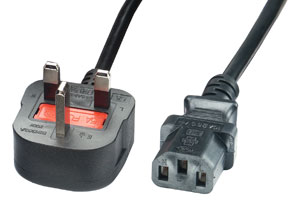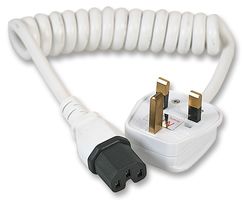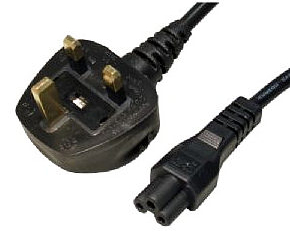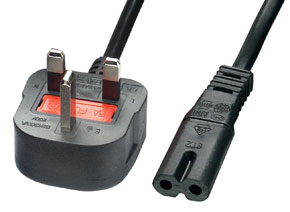Know your mains connectors
Introduction
There are a multitude of connectors used with computers and this can lead to a lot of confusion. This page aims to list the common connectors to help you identify connecting leads and their usage.
Mains electricity
Desktop PCs, monitors (and televisions), some laptop power supplies, printers and business-grade networking equipment typically use the IEC C13 connector. It should not be confused with the "hot condition" IEC C15 connector (note the notch), which you will find on most kettles.
 C13 lead |
 C15 lead |
The C13 connector is rated at 10 Amps and the mains plug is typically fitted with a 5 or 10 Amp fuse. Care should be taken when replacing a blown fuse. Always replace like-for-like, i.e. a 5 Amp fuse for a 5 Amp fuse. Fitting a 13A fuse may, under fault conditions, damage equipment, melt the lead, and possibly start a fire! The C15 connector is rated at 10 to 15 Amps and the mains plug is typically fitted with a 13 Amp fuse. Do not use a C15 lead in place of a C13, as again, under fault conditions, the higher fuse rating may damage equipment and possibly start a fire.
Laptop power supplies (a.k.a. power-bricks), some monitors and some printers use the C5, or "Cloverleaf" connector; or the C7, or "figure 8" connector..
 C5 lead |
 C7 lead |
Both connectors are rated at 2.5 Amps and the mains plug is typically fitted with a 5 Amp fuse. The C7 connector is typically found on double-insulated equipment that contains no metal parts, and therefore does not require an earth connection.
Cannot find your mains connector here? Try the IEC 60320 page on Wikipedia.
Page updated: 10th May 2017
